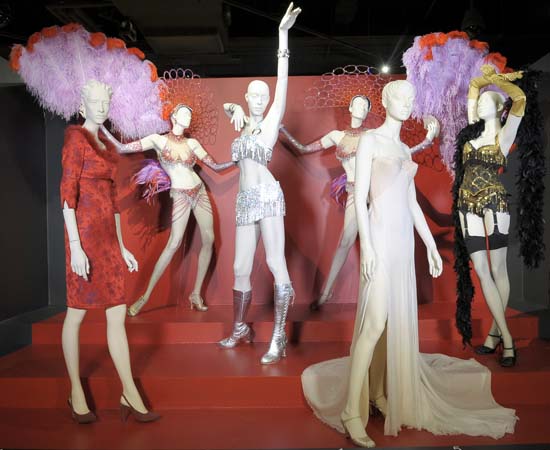It was a sight that would have made any jewelry lover sigh ““ a dress made entirely of Swarovski crystals, each stone catching the light and sparkling like the stars on a dark night. Colleen Atwood, the designer of the dress in question, used more than one million of such crystals to adorn this and 35 other dresses featured in the Rob Marshall film “Nine.”
The costumes from the film are currently on display at the 18th annual “Art of Motion Picture Costume Design” exhibition until April 17 and hosted by the Fashion Institute of Design and Merchandising.
In addition to “Nine” ““ which has been nominated for an Academy Award for Best Costume Design ““ the exhibition also holds costumes from 20 other films from 2009. These films include “Watchmen,” “The Young Victoria,” “Public Enemies” and “Where the Wild Things Are.”
According to Kevin Jones, who serves on the curatorial board for the exhibition, the process of choosing the costumes in the exhibition is one that takes all year.
“We’re looking at previews, going to screenings, movie magazines, industry magazines, talking to designers and talking to studios,” Jones said. “It’s something we are looking at all year round, to determine what is the best, most significant, costume-driven films throughout the year.”
Having worked on the exhibition for 11 years, Jones said he finds the choice of films this year to cover a wide range of genres and time periods.
“We have a really interesting range of films this year. It’s usually either really heavy historically or really heavy contemporary films,” Jones said. “It’s very balanced this year.”
Atwood had previously worked with Marshall, the director of “Nine,” on “Chicago” and “Memoirs of a Geisha.” Yet she said that the work on “Nine” was particularly difficult, due to the fact that there were 10 principal characters and more than 200 dancers to dress.
“When you’re doing a musical film, it’s like doing two films at one time, the story then the musical number. I was just designing and making costumes the whole time we were shooting,” Atwood said.
Yet it was not only the number of costumes, all constructed to individually fit the nine leading ladies of the film, that made the work difficult. Atwood also drew from a variety of time periods, ranging from the 1930s to the 1960s.
“There were different time periods in each number. (For example,) Kate Hudson was the girl of the future in the ’60s. They each come from a different point in (Daniel Day Lewis’) life so the costumes all reflect that,” Atwood said.
In addition to “Nine,” Atwood designed for “Public Enemies,” also on show at the exhibition.
Sheer variety could also be used to describe the costumes used in “The Imaginarium of Doctor Parnassus,” directed by Terry Gilliam (of “Monty Python” fame) and which starred Heath Ledger in his last acting role.
For the film, which also contained the real world interposed with theater and fantasy, costume designer Monique Prudhomme drew from a plethora of different influences.
“Dr. Parnassus is an immortal and he has, over the years, traveled the world … so the idea was to gather all sorts of information, especially the 17th century European clothing … the Asian fabrics and the Indian fabrics,” Prudhomme said. “Then it was a question of picking things and creating a look with all the bits and pieces.”
While the costumes from “Parnassus” were drawn from many sources, Prudhomme said she finds an abundance of inspiration and references essential for any student who wants a career in costume design.
“(My advice for students), is to make sure that they see. And they look at books and they travel. And to really create a library in their heads so they have a lot of references to pull from,” Prudhomme said.
For Prudhomme and Atwood, such hard work, research and detailing has paid off: They are both nominated for Academy Awards for their work.
This year will be Atwood’s eighth nomination and she still finds the announcement to be a surprise.
In Prudhomme’s case, it is her first nomination.
“It is unreal, it is so big and it’s like a big myth. You always feel that it’s for another gang of people and to be involved in it is magical and, of course, to be recognized by our peers in the industry is a great honor,” Prudhomme said.
In terms of research and educational experience, Jones said he finds that looking at the costumes within the exhibition can be a valuable teaching tool for both students and the general public.
He added that it enables them to take a close scrutiny of the costume, to admire the detail that would sometimes not be noticed when watching a film.
“The garments are specifically meant to be seen on-screen, to function on-screen, to act on cue, on-screen,” Jones said. “And it’s astounding to see how very different that can appear in person. You can really look at the garments in detail.”
